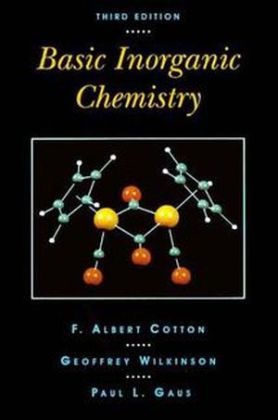Read more
Explains the basics of inorganic chemistry with a primary emphasis on facts; then uses the student s growing factual knowledge as a foundation for discussing the important principles of periodicity in structure, bonding and reactivity. New to this updated edition: improved treatment of atomic orbitals and properties such as electronegativity, novel approaches to the depiction of ionic structures, nomenclature for transition metal compounds, quantitative approaches to acid-base chemistry, Wade s rules for boranes and carboranes, the chemistry of major new classes of substances including fullerenes and silenes plus a chapter on the inorganic solid state.
List of contents
Partial table of contents:
FIRST PRINCIPLES.
Some Preliminaries.
Structure and Bonding in Molecules.
The Chemistry of Selected Anions.
Solvents, Solutions, Acids, and Bases.
THE MAIN GROUP ELEMENTS.
Hydrogen.
The Group IIA(2) Elements: Beryllium, Magnesium, Calcium, Strontium, and Barium.
The Group IIIB(13) Elements: Aluminum, Gallium, Indium, and Thallium.
The Group IVB(14) Elements: Silicon, Germanium, Tin, and Lead.
The Group VB(15) Elements: Phosphorus, Arsenic, Antimony, and Bismuth.
The Group VIB(16) Elements: Sulfur, Selenium, Tellurium, and Polonium.
The Noble Gases.
TRANSITION ELEMENTS.
Introduction to the Transition Elements: Ligand Field Theory.
The Elements of the Second and Third Transition Series.
The Actinide Elements.
SOME SPECIAL TOPICS.
Organometallic Compounds.
Bioinorganic Chemistry.
Appendices.
Glossary.
Index.
About the author
F. ALBERT COTTON, PhD, is a professor in the Department of Chemistry at Texas A&M University.
SIR GEOFFREY WILKINSON, PhD, was a professor in the Department of Chemistry at the Imperial College of Science, Technology, and Medicine in London, United Kingdom.
Summary
Explains the basics of inorganic chemistry with a primary emphasis on facts; then uses the student's growing factual knowledge as a foundation for discussing the important principles of periodicity in structure, bonding and reactivity.

